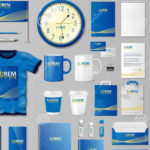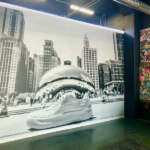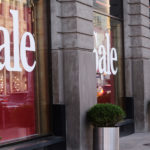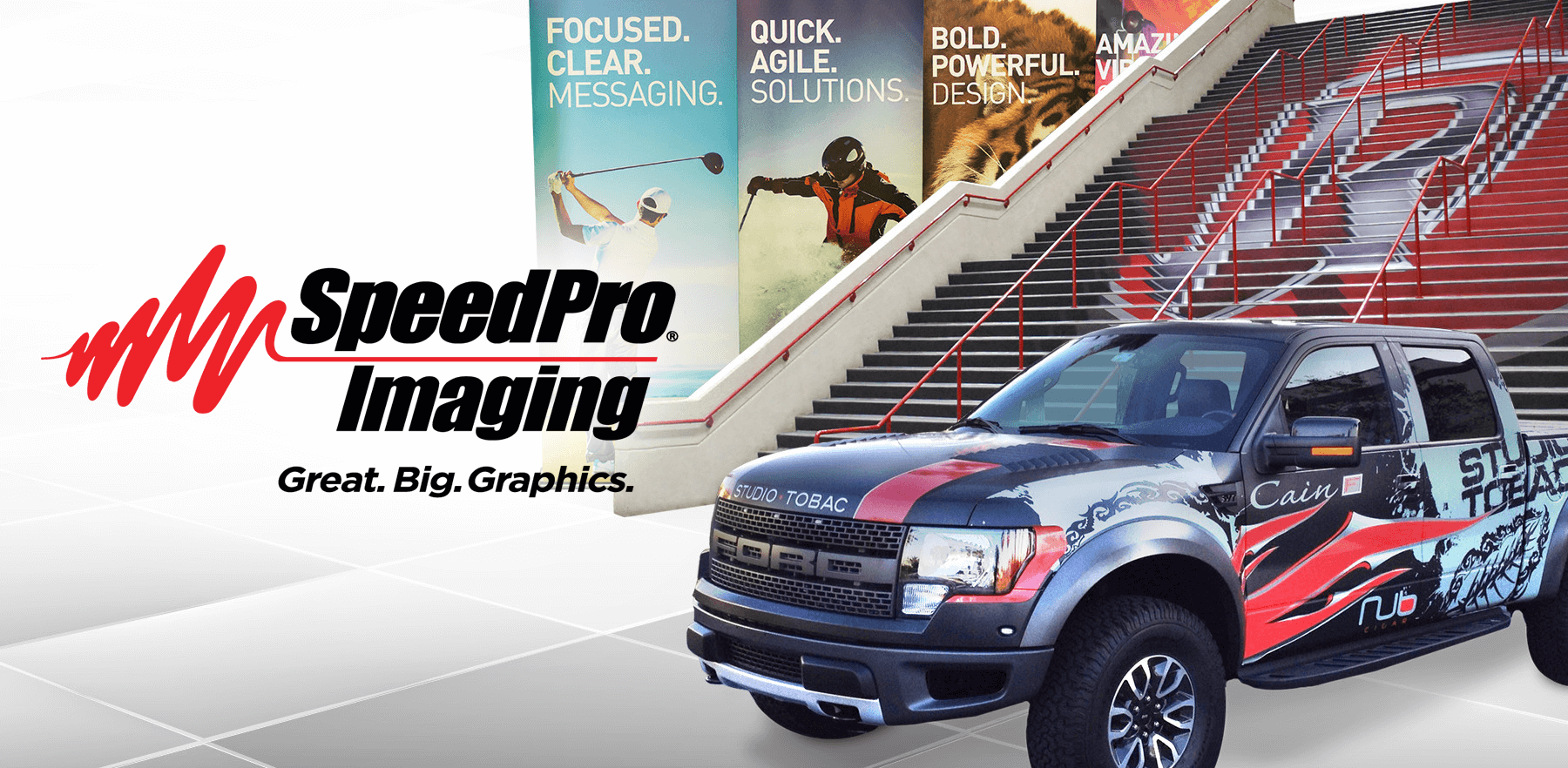
HOW CAN I USE WINDOW GRAPHICS FOR MY BUSINESS?
DECEMBER 12, 2018| SpeedPro Cleveland WestCategories
Window GraphicsThere’s a scene in the HBO TV show “Silicon Valley” during which Richard, the CEO and founder of the company Pied Piper, tries to convince his team to rent out office space in a building in the area. The only trouble is, the office space has no windows and is little more than a white box. After explaining to the CEO why the office would never work out, one of the team members ends up having a panic attack while the other two flee, promising never to return.
The scene is a good reminder of the importance of windows for businesses. Not only do windows provide a source of natural light, which helps people work better and is often seen as a top office perk, but they can also be an effective tool for promoting a business. The windows on a storefront or office give your company a chance to show off, grab people’s attention and convince them to come on in.
One way you can perk up the presence of your business’ windows is by using window graphics. Window graphics not only announce your company’s presence to the world but can also provide promotional information and other details about your company. In some cases, the windows into your business give passersby something to marvel at, making them more likely to visit or remember your company in the future.
You can dress up the windows of your business in a few different ways. One option, made popular by department stores in cities across the U.S., is to create displays inside the window so that people looking in can see a story unfold. Another option is to use window graphics on the surface of the windows themselves to convey information to passersby and potential customers.
WHAT ARE WINDOW GRAPHICS?
Window graphics are signage and advertising products that are attached directly to a window. Typically, they’re made from a type of film that adheres to glass without damaging it. Window graphics come in a variety of different types, styles and sizes, and they’re usually fully customizable based on a business’ needs.

TYPES OF WINDOW GRAPHICS
The kind of window graphics that a business uses depends in large part on the location of the graphics and how long the company plans to use them. Here are a few examples of the different types of window graphics available.
LOCATION-BASED WINDOW GRAPHIC TYPES
First and second surface specifications will determine where your graphic shows up:
- First surface: First surface window graphics are applied to the exterior side of the window and face outside of the building (rather than the interior). The graphics or images are printed on the front of the vinyl or film and face outward.
- Second surface: Second surface window graphics are applied on the interior side of the window. They face out toward the street, but the glass itself forms a barrier between the film or decal and the exterior world. One benefit of second surface graphics is that the decals or clings are usually protected from the weather. While first surface graphics are printed on the front of the material, second surface graphics are printed on the backside. They’re also reverse-printed, so images and text always face the correct way when the graphic is applied to the glass.
DURATION-BASED WINDOW GRAPHIC TYPES
How long a business intends to use window graphics determines how the graphics are attached to the glass and the type of materials used to make them. Some graphics are designed for long-term use while others are meant for short-term use.
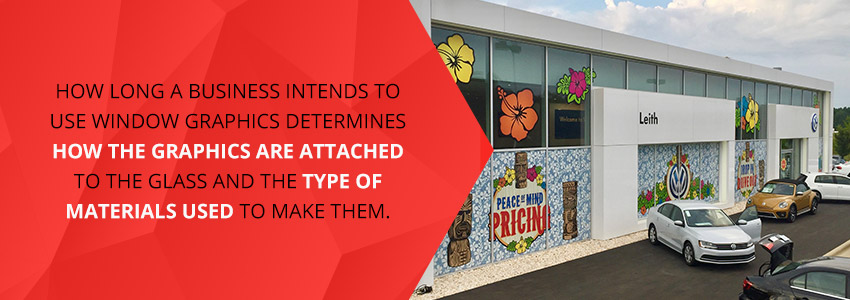
For example, a business might want to display its logo and brand name on a window, as well as its address and phone number, for an extended period. But other information, such as details on a holiday sale or information about an upcoming job fair, only needs to stay up for as long as the promotion lasts.
The types of duration-based window graphics out there include:
- Window clings: A window cling doesn’t use adhesive to attach itself to the surface of the glass. Instead, it “clings” to a window’s surface thanks to static electricity. The way a cling attaches to a window means it’s held a little less securely in place compared to other options. Usually, window clings are used on a short-term basis. They’re reusable though, so you can order a window cling to promote a sale one year and use the same cling again the next year.
- Window decals: A window decal attaches to the glass surface of a window thanks to an adhesive. Ideally, the adhesive used to affix the decal to the glass can withstand sun exposure and exposure to water, so the decal remains in place even after days of sunlight or exposure to rain or snowstorms. The quality of the adhesive also determines whether or not it leaves any sticky residue behind when it’s removed. Higher-quality decals usually don’t leave any stickiness behind.
- Window stickers: Some would argue that a window sticker is the same as a window decal. Like a decal, a sticker has an adhesive on it that attaches it to the glass. One feature that some claim separates a sticker from a decal is the fact that a sticker is usually meant for one-time or very short-term use, while a decal often has a longer useful life expectancy.
TYPES OF WINDOW GRAPHIC FILMS
Window graphics can also differ when it comes to the type of film used to create the graphic. A few examples of the different film types available include:
- Transparent films: Transparent window films are completely see-through. They can be printed with graphics or text. When printed and applied to a window, only the colored portion of the graphic is visible. The rest of the film blends in with the glass.
- Translucent films: Translucent window films are similar to transparent films but are also designed to be backlit, making them visible to passersby in the evening or nighttime hours.
- Perforated films: Also known as “one-way vision” films, perforated films let people see out of a window, but not in. The exterior of the window is covered in a graphic, but the small holes in the film allow people on the inside of a building to see out. Perforated films are also often used on vehicle windows in the form of bus and car wraps.
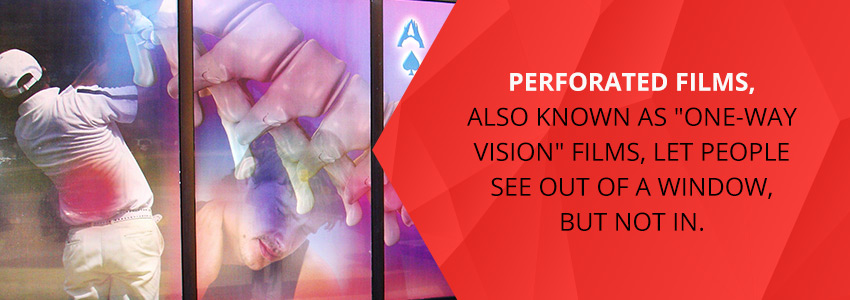
- Opaque films: Opaque films are not see-through. They’re often a solid color, such as white. The graphics and text are printed on the film, and any area that isn’t printed on remains visible when the graphic is applied to the window.
- Crystal films: Crystal films are the “frosted glass” version of window graphics. Often used to create privacy, they work well when used on interior windows. For example, you might cover the windows of a conference room with a crystal film so that people can’t see who’s inside. Light would still be able to travel through the film.
WINDOW GRAPHICS STYLES
Window graphics are available in a range of styles, including:
- Vinyl lettering: Vinyl letters can be cut into the font or type of your choice, such as block lettering or script. Lettering can serve a practical purpose, such as letting customers know about a sale, your hours of operation or your company’s address.
- Large impact graphics: Large impact graphics tend to be attention grabbers. They often fill an entire window space and might take up multiple windows. These graphics can include photographic images, such as pictures of people wearing your brand’s clothing or pictures of food and drinks. You can also choose to have your brand’s logo blown up into a large graphic and applied to a window.
- Smaller graphics: Smaller graphics can include smaller versions of your company’s logo as well as designs that don’t take up the entire glass surface of the window.
- Privacy coatings: A privacy coating might involve a crystal or etched glass film over the entire surface of the window or small strips or blocks of a “frosted glass” look window decal or cling.
TOP BENEFITS OF WINDOW GRAPHICS
Using window graphics can deliver multiple benefits to your business. Not only can the graphics help to attract more customers to your company, but they can also help you build your brand identity and define who you are and what makes your business different. Some of the most significant benefits of window graphics include:

- Flexibility: Whether you choose to use a window decal or cling, window graphics tend to be flexible. You aren’t stuck using the same graphics year-in and year-out unless you like them. Since the graphics are usually not difficult to remove or reposition, you have the option of changing them out more frequently than other types of graphics.
- Built-in advertising: Window graphics offer an ideal way to let the world know your business exists. Not only that, but the graphics can help people get a better sense of who your company is and what it does. When people walk up to a building that has pictures of food emblazoned across the windows, they’re likely to put two and two together and figure out that they’re approaching a restaurant.
- Promotion of sales and company news: Window graphics give stores the opportunity to highlight current sales or special offers. When those stores get new products in or start selling a new brand, the company can use a window graphic display to highlight the new products. Even businesses that aren’t retailers can benefit from window graphics. For example, a gym can use graphics to announce new operating hours or that it’s got new exercise equipment, and a nail salon can use graphics to let people know that it’s now offering gel manicures.
- Greater privacy: Although window graphics are often used to share information, they can serve other practical purposes too. For example, you can use window graphics to create a privacy barrier on windows on the interior of a workspace. You can also use frosted glass or crystal films to block off parts of your workspace that you don’t want passersby to see — without taking the natural light out of those spaces.
- Attention: People are more likely to notice a business that has a sign or graphics on its facade. If your company’s windows are bare and you don’t have much else in the way of signage, how is anyone going to know you’re there?
- Savings: In some areas, hanging up a sign or putting up another type of display requires a permit. It costs money to rent a billboard or purchase a print ad. While window graphics aren’t free, they do tend to cost a lot less than other forms of advertising and usually don’t require the purchase of a permit.
- Improved appearance: Window graphics give you the chance to dress up your workspace or building and mask any unappealing areas. For example, if your office has a view of an alley, you can use window graphics to create the illusion of a pretty mountain view or a view of the ocean. You can also use window graphics to put your brand’s stamp on a building you don’t own.
EXAMPLES OF WINDOW GRAPHICS IN ACTION
Consider the following popular applications for window graphics, but remember that your imagination is the limit when it comes to the possibilities.
INTERIOR DESIGN
Window graphics have multiple uses when it comes to improving the interior design of a company’s office or location. For example, a large graphic on the inside of a conference room window can conceal a lackluster view or keep outsiders from peeking in when you’re holding an important meeting. If your office floor plan has a lot of glass windows or walls, graphics can create a sense of privacy without making the space feel closed off or cramped.
GYMS
Window graphics can be used to help create privacy at gyms or fitness centers while attracting new clients. For example, one-way view graphics can feature images of people working out inside the gym. Those images can make people who have been planning on exercising more decide to come in and join. Meanwhile, the people inside the gym don’t feel as though people walking by outside are watching them sweat. Since the graphics are made with a perforated film, gym members are still able to see out through the windows.
RETAIL
Retailers can use window graphics in so many ways. A store that’s about to open can use the graphics to let people know about its grand opening. Meanwhile, a store that has recently relocated can hang up a window decal in its old location to let customers know of the move. Finally, retailers can use graphics and lettering to create eye-catching displays that make people want the items the store has to offer.
RESTAURANTS
Whether it’s a casual fast food establishment or a more elegant dining location, restaurants often use window graphics to highlight items on their menu and share information with customers. For example, a restaurant can use window clings to highlight happy hour offers or let people know what the specials are for the day. Some restaurants fill their windows with over-sized images of the dishes they serve, enticing hungry customers to come in for a meal.
GET HELP CREATING WINDOW GRAPHICS FOR YOUR BUSINESS
If you think window graphics would help you better promote your business, or if you’re looking to use them to jazz up your company’s appearance, SpeedPro Cleveland West can help. Our experts can assist you in choosing and creating the window graphics that will help you meet your goals the fastest. To learn more, contact SpeedPro Cleveland West today.


